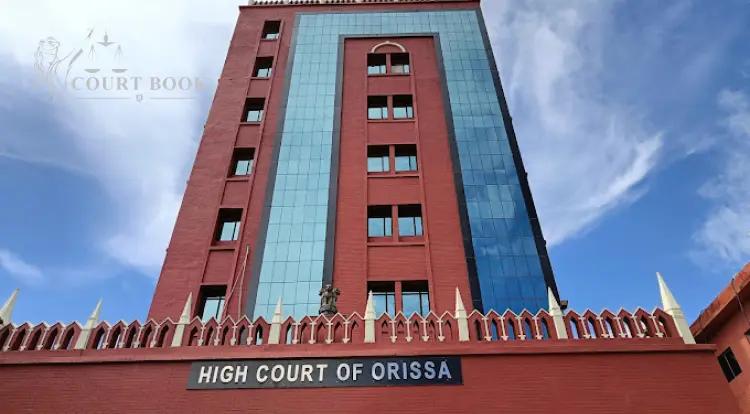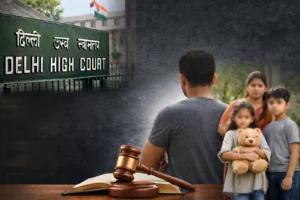The Orissa High Court has reaffirmed a 20-year-old verdict by the Adhoc Additional Sessions Judge, Bhubaneswar, acquitting two individuals accused of raping and murdering a minor girl in 2003. The Division Bench of Justice Bibhu Prasad Routray and Justice Chittaranjan Dash dismissed the reliability of a sniffer dog’s evidence, emphasizing that it is mere hearsay without proper corroboration.
"Since the dog cannot testify in court, its handler must provide evidence regarding the dog’s behavior. This introduces a layer of hearsay, as the handler is interpreting the dog’s reactions rather than providing direct evidence."
Read Also: Police Dog Cannot Testify In Court, Handlers' Evidence Requires Corroboration: Orissa High Court
Case Background
On May 1, 2003, a pratistha ceremony was underway for a newly built Shiva temple near the river embankment in Gangeswarpur Sasan. Several children, including the deceased minor girl, were playing near the temple. As the night progressed, all other children returned home except for the minor girl, who remained missing.
A village-wide search ensued, but she was found lifeless the next morning in a dried pond amid bushes near the temple. Her body had visible injuries on the cheek, neck, private parts, and other areas. The police registered an FIR under Sections 364, 376(2)(f), 302, and 34 of the IPC.
Read Also: Orissa High Court Declares Marriage Beyond Repair: Grants Divorce in Case of Mental Cruelty
Following an investigation, a charge sheet was filed against the accused. However, the trial court found that the prosecution had failed to establish a complete chain of circumstances proving their guilt, leading to their acquittal. The State later filed an appeal challenging this decision.
The prosecution's case relied heavily on circumstantial evidence, particularly the ‘last seen’ theory. A minor boy testified that he last saw the deceased in the company of the first accused.
"P.W.2 initially stated that during the pratistha ceremony, around 9:00 p.m., he saw Respondent No.1 calling the deceased towards Tikarpada village while she was standing on the river embankment. However, during cross-examination, P.W.2 admitted that due to darkness, he could not see much and eventually went home. Importantly, P.W.2 later turned hostile, thereby weakening the prosecution’s case."
The Court noted that the significant time gap between the last sighting and the discovery of the body left room for other possibilities. Without direct evidence linking the accused to the victim immediately before her death, the last-seen theory could not be upheld.
The prosecution also pointed to the suspicious behavior of the first accused after the incident, alleging that he:
- Opened his shop the next morning but appeared inattentive.
- Did not participate in the village-wide search.
However, the Court rejected these arguments, stating:
"Mere non-participation in a search for a missing person does not automatically indicate guilt unless accompanied by other incriminating circumstances. In this case, there is no direct evidence linking Respondent No.1's behavior to the crime."
The Court further observed that his behavior could be attributed to his known habit of consuming ganja (cannabis) rather than an indication of guilt.
"Interpreting these actions as guilt without substantive evidence is speculative. His unusual behavior could reasonably result from intoxication rather than involvement in a crime."
Another minor witness testified that the accused had previously committed rapes but had evaded punishment due to village warnings.
The Court dismissed this evidence, stating:
"The notion that a serious crime like rape could be resolved informally within the village without formal legal action seriously questions its credibility. Mere rumors or village gossip cannot form the basis for a conviction without concrete evidence."
The State argued that a sniffer dog led investigators to both the victim’s body and the first accused’s shop, suggesting his involvement. However, the Court ruled that this evidence was insufficient, citing a 1969 Supreme Court ruling in Abdul Rajak Murtaja Dafedar v. State of Maharashtra.
"The prosecution did not present evidence of the dog’s training, skill, or past performance to establish its reliability. No forensic evidence, such as fingerprints, bloodstains, or incriminating materials, was recovered from the locations identified by the dog."
Furthermore, the Court noted that external factors might have influenced the dog’s tracking, making it an unreliable source of evidence.
Regarding the second accused, the Court held that mere association with the first accused was not enough to establish guilt. Without independent evidence linking him to the crime, the trial court’s decision to acquit him was upheld.
As a result, the High Court dismissed the appeal and confirmed the acquittal of both accused persons.
Case Title: State of Odisha v. PKD & Anr.
Case No: CRLLP No. 53 of 2006
Date of Judgment: March 26, 2025
Counsel for the Appellant/State: Mr. S. B. Mohanty, Additional Government Advocate
Counsel for the Respondents: Ms. A. Mishra, Advocate for Respondent No.1; Mr. P. Jena, Advocate for Respondent No.2














